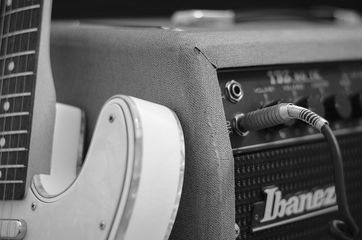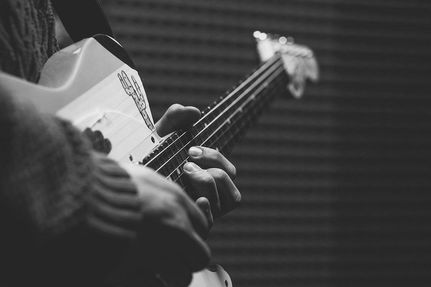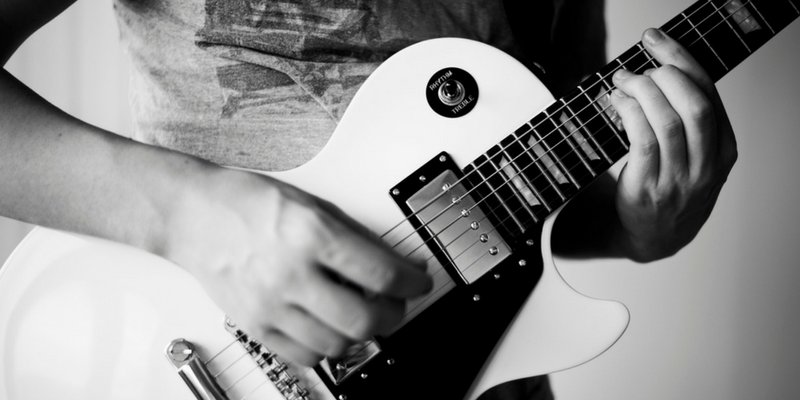As guitarists, we tend to get comfortable with our playing at a certain level and not venture out of our comfort zones too often, especially if there’s no one close at hand that’s better than us. If, on the other hand, you do fancy taking a step outside your comfort zone, how do you go about it? If you’re anything like me, you probably want to do something radical that will give you some much-needed inspiration or insight into your playing. If you’re not like me, and you just want some kind of quick fix, do some ear training – it’s one of the few things that encompasses and improves all other guitar skills. But, for anyone who’s slightly masochistic, here are five things you could try.
1. Play Straight Through an Amp (at a Gig)
This is possibly the scariest set-up known to guitarists: no pedals, no racks, just plug your guitar straight into the (house) amp and play – digital modelling amps don’t count. This is truly painful for some, but a great skill to have nonetheless. Back in the early days of the ACM, we’d often get called upon to play in class which inevitably meant trying to get a decent sound out of a low-end Fender amp in the corner of the room while Guthrie Govan, Dave Kilminster, Pete Friesen, Jamie Humphries or Eric Roche waited for you to get set up. This caused absolute anguish to most guitarists who’d react as if they’d been sent up to play in their underwear. After a couple of weeks of the aforementioned guitar gods getting the brunt of everyone’s cringe-worthy, stripped-down sound, I decided I had to master getting a decent tone from the variables offered by a cheap Fender amp and the pick-up and tone controls on my guitar. Truth is, there’s only so much fiddling you can do with the knobs available, and what it comes down to is how comfortable you are (psychologically) just playing through an amp and how you put your fingers to work. During the next few years, for one reason or another, I usually ended up playing through either the house amp or someone else’s gear when there are various bands on, the advantages of which are numerous:
-The sound guy will love you
-You don’t need any 9v batteries
-You learn to use the tone controls on your guitar
-You learn that there are other volume settings apart from 0 and 10
-You have less shit to carry
-You can get set up quicker than the bass player
-You can spend more time at the bar, shooting the shit, or chatting up members of the opposite sex
-Far fewer things can go wrong
-People won’t steal your shit because you don’t have any
-Everything fits into your car
If you don’t fancy doing this at a gig, it’s a great thing to incorporate into your practice sessions because you start to do things with your fingers, the way you pick, bending, vibrato etc. that you don’t necessarily do when you have a magic box to stomp on that solves all your sound problems.
2. Learn the Notes on the Neck in No Man’s Land
Only the most highly adventurous players venture into this part of the neck where few know the actual names of the notes.

Imagine what you could do up there if you knew what the notes were.
3. Play a Scale in all 12 Keys
In many guitar books, you’ll find the dreaded phrase, ‘Now learn this in all 12 keys’, and while you should probably do that, most guitarists don’t, and why would you if you’ve just learned a shape that can be shifted around from key to key without too much mental effort? There’s something deeply satisfying about playing a scale, arpeggio, chord or lick in all 12 tonalities: your hands start to hurt in a different (but good) way, you REALLY learn the shape or pattern, you build stamina, you feel like a real musician, and you feel strangely productive. So, choose your poison – 3NPS – the CAGED System – the 2 Position System – Pentatonics; and learn something in all 12 keys.
4. Try Fourths Tuning
Tune your top B and E strings up to C and F respectively and you now have a symmetrical fretboard; in other words, you get rid of that annoying bump between the G and B strings. Having a symmetrical fretboard means there’s far less stuff to learn in terms of chords, arpeggios and scales, plus you now have a consistent interval system across the whole fretboard. I love fourths tuning and have been using it for a number of years, so if you’ve got a spare guitar laying around, tune it to fourths, road-test it for a couple of months, and try not to fall in love with it. There’s somewhat of a lack of fourths tuning material, and to save you working out all those new patterns, check out our latest books:
Fourths Tuning – Chords and Inversions
Fourths Tuning – Scales and Arpeggios
If you’re wondering who the hell tunes in fourths for a living, check out Ant Law, Stanley Jordan, Tom Quayle and Alex Hutchings.
5. Hold Back
Very few players do this but I highly recommend it. This is taking the concept of not being the classic too-loud, too-fast guitarist to the next level. Most guitarists come out all guns blazing, and by the third number in the setlist are scraping their barrel of tricks to impress the audience. What you want to do is hold back as much as possible, and try to go pretty much unnoticed for the first half of the set, then when you come back out, it’s time to tear into your bag of tricks. You’ll find that you’ll be able to execute them better because by the second half of the set you’re usually as relaxed as you can be and the time to insert all your favorite tricks is when everything is flowing nicely, not at the beginning when you’re desperate to impress.
If you’re looking for more inspiration, check out:
50 Guitar Hacks for the Thinking Man’s Guitarist
50 More Guitar Hacks for the Thinking Man’s Guitarist
50 Guitar Hacks for the Advancing Guitarist



